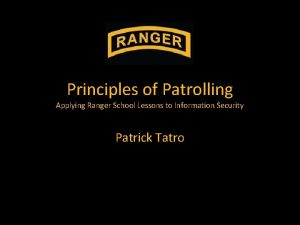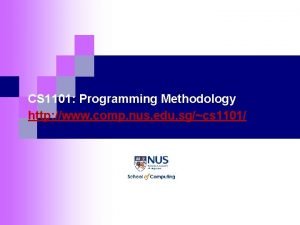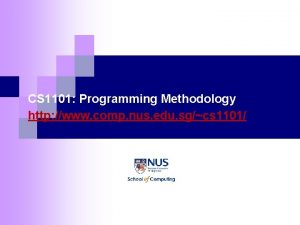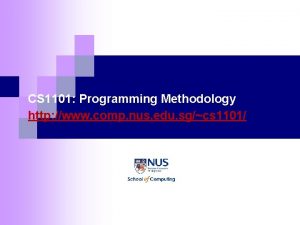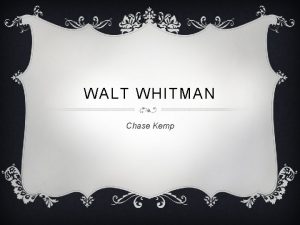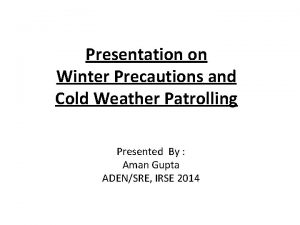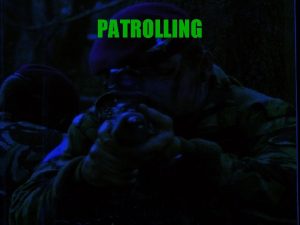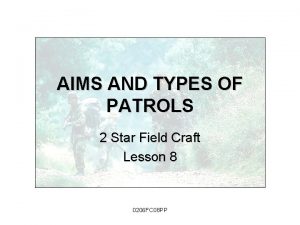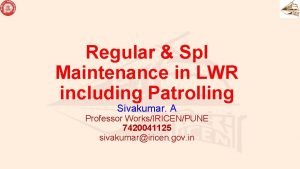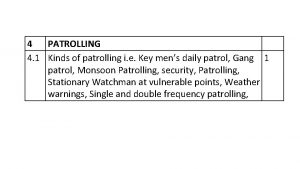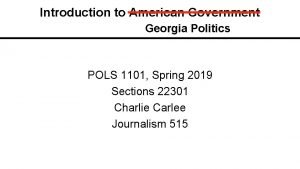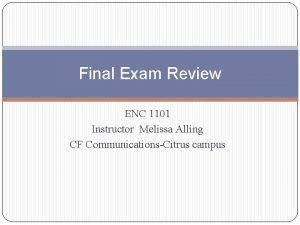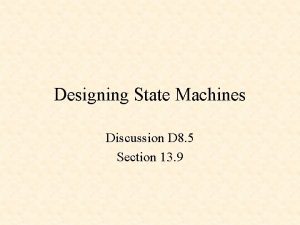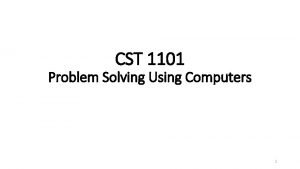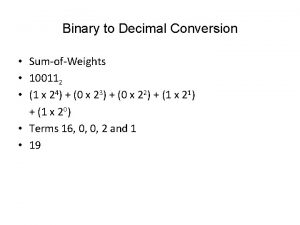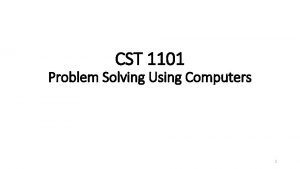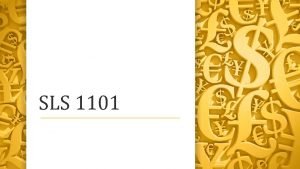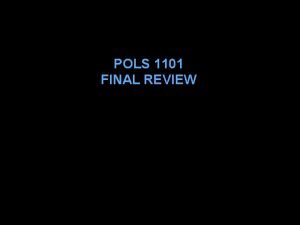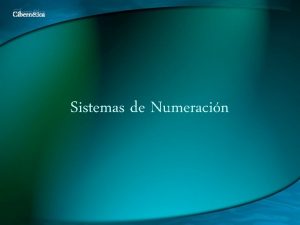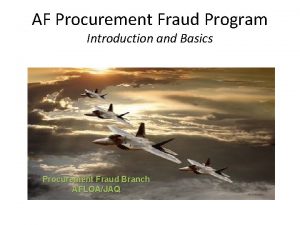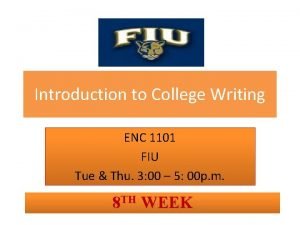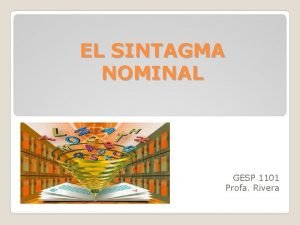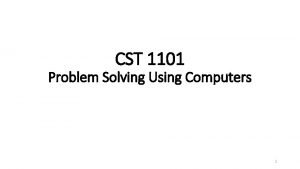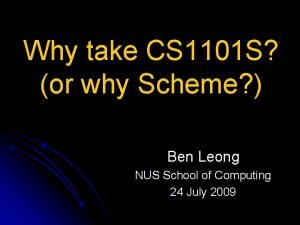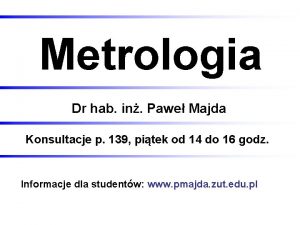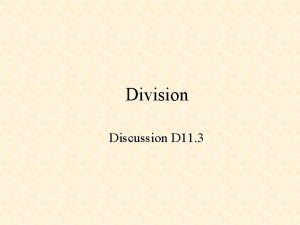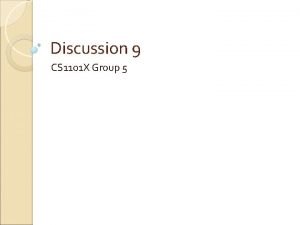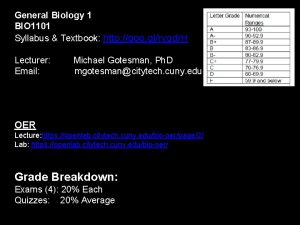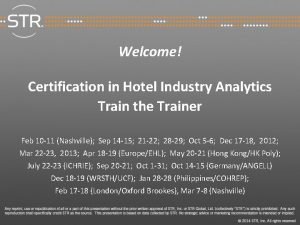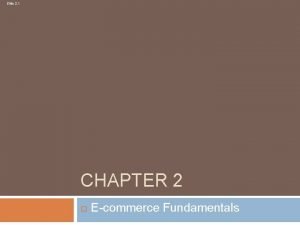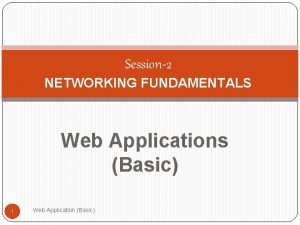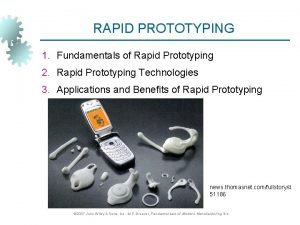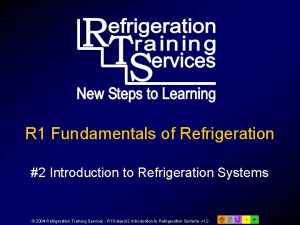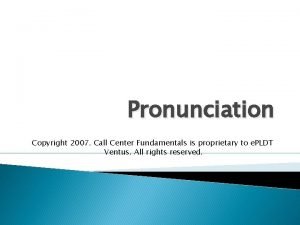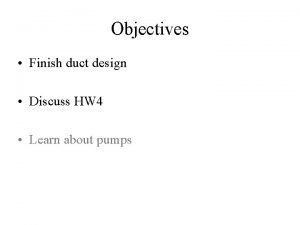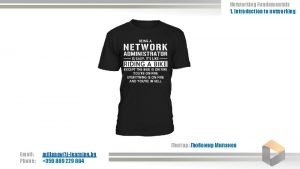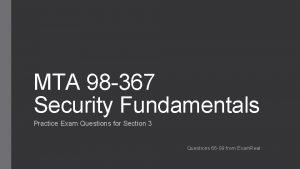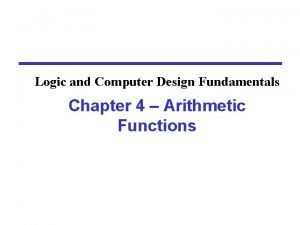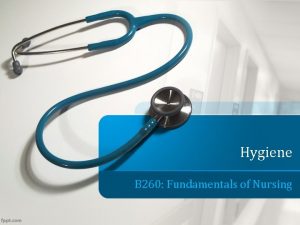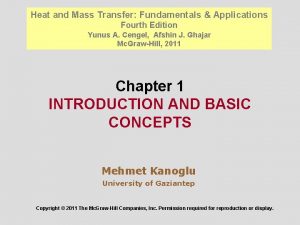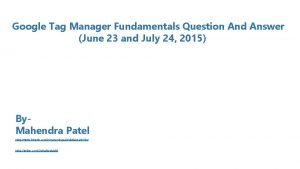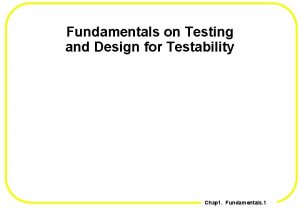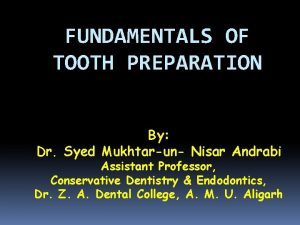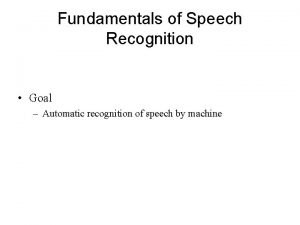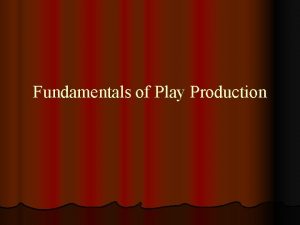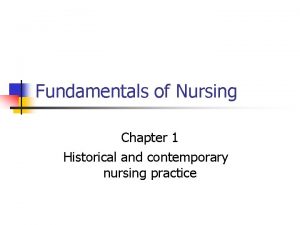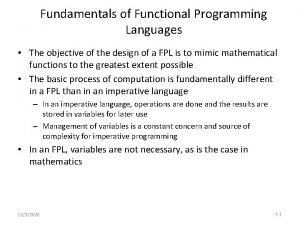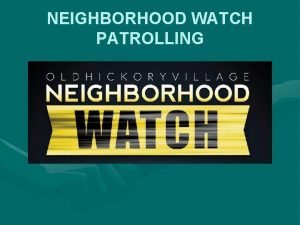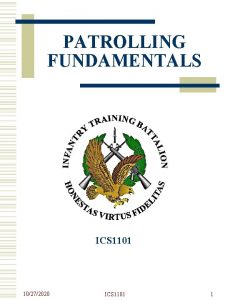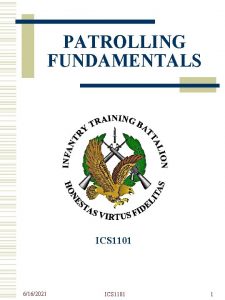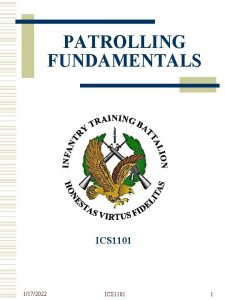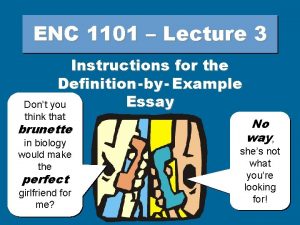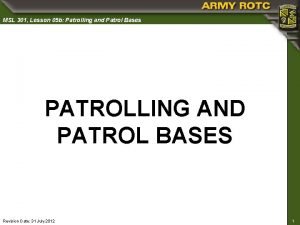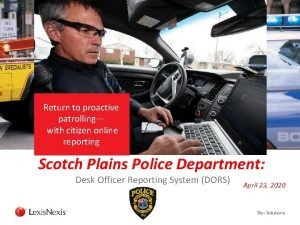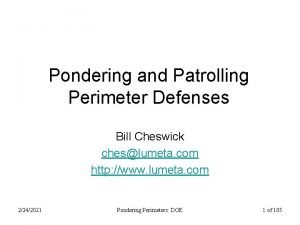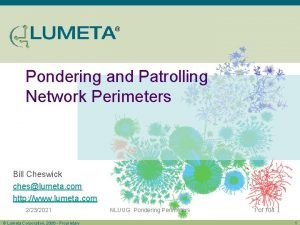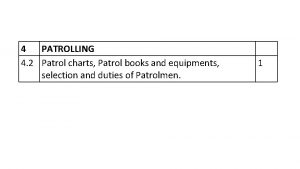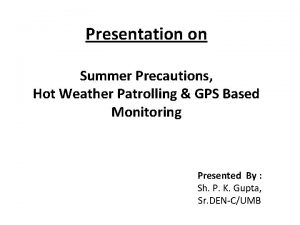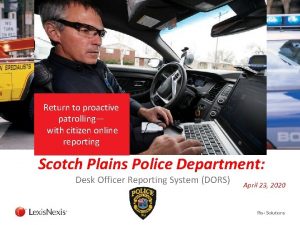PATROLLING FUNDAMENTALS CS 1101 1 DEFINITION OF A








































































- Slides: 72

PATROLLING FUNDAMENTALS CS 1101 1

DEFINITION OF A PATROL w. A patrol is a detachment of ground, sea or air forces sent out for the purpose of gathering information or carrying out a destructive, harassing, mopping -up or security mission 2

THE PURPOSE OF PATROLLING w Gain current information about enemy/terrain w Destroy enemy installations w Capture enemy personnel w Perform security missions w Prevent the enemy from gaining information 3

TYPES OF PATROLS w CLASSIFIED INTO TWO GROUPS n MISSION n MEANS OF MOVEMENT 4

PATROL TYPES w Reconnaissance – Gather information about enemy, terrain, and/or resources n Relies on stealth rather than combat strength § Fight only when necessary to accomplish mission/defend themselves 5

RECONNAISSANCE PATROLS w Route – Obtain info on a specified route and associated terrain w Area – Obtain info on enemy, terrain, and/or resources in a given area (e. g. , a village) 6

RECONNAISSANCE PATROLS w Zone - Info concerning all routes, obstacles (to include chemical/ radiological contamination), terrain, and enemy forces within a zone defined by boundaries 7

PATROL TYPES w Combat – Fighting patrol; may engage enemy n Contact – Establishes and maintains contact with friendly or enemy force n Ambush – Surprise attack from a concealed position 8

COMBAT PATROLS CONT. § Raid – Executes a limited objective, surprise attack on an enemy force or installation and then conducts a planned withdrawal § Security - Prevents infiltration and or surprise attacks 9

PATROL CLASSIFIED BY MEANS OF MOVEMENT w Foot – Most common; limited range w Motorized – Greater range; limited by terrain w Waterborne –Used as entry for patrol w Helicopterborne – Where terrain or situation precludes use of vehicles 10

PATROL ORGANIZATION w Organization of a patrol is a two-step process. n General organization- entire patrol n Task organization- patrol units w The major subdivisions of patrols are called elements 11

GENERAL ORGANIZATION w Typical patrol elements: n Headquarters n Support element n Security element n Assault element 12

TASK ORGANIZATION w Patrols are further subdivided into teams w Each team performs essential, designated tasks w Patrol members must know how to perform tasks assigned to all members 13

INDIVIDUAL TASKS w Assistant Patrol Leader - Assists the PL; takes charge in absence of PL w Radio Operator –Maintains communication; reports incoming transmissions to PL w Navigator –Maintains direction of movement in accordance w/ patrol route 14

INDIVIDUAL TASKS w Pace Man – Assists PL in determining distance patrol has traveled w Flanks – Helps prevent a surprise attack to the patrol’s flanks 15

GATHERING INFORMATION w A commander often acts on information furnished by scouts and patrols. w While scouting or patrolling, information may be gathered through direct enemy observation or through the interpretation of signs and tracks. 16

DIRECT OBSERVATION w Most common method: Listening Posts and/or Observation Posts (LP/OPs) n Typically used in a defensive position w Can also be observed by any member of a patrol w All members must report their sightings 17

SIGNS AND TRACKS w Footprints and bivouac site can indicate number of enemy troops w Condition of bivouac site indicates morale, discipline and the type of withdrawal w Vehicle tracks indicate enemy equipment n Wheels vs. tracks 18

METHODS OF REPORTING INFORMATION w Distinguish between facts and opinions w Answer: n Who? n What? n Where? n When? 19

VERBAL MESSAGES w Radio is fastest for verbal reporting w Messenger used when radio is unavailable n Always repeat message out loud n Report information obtained along route n If captured, do not reveal information in the message 20

WRITTEN MESSAGES w Preferred to verbal messages w Should be brief, accurate, and clear w Should include overlay/sketch of situation observed or interpreted w May be posted as a formal report 21

PYROTECHNICS w Flares, colored smoke, and grenades may be used for reporting information w Meaning of signal must be established in advance of operation w Example: Green star cluster = enemy approach 22

SALUTE REPORT w Size/strength w Activity/Actions w Location/direction w Unit identification w Time and date w Equipment/weapons 23

SALUTE REPORT w Information about observer must include: n Location at time of observation n Intention of originator and/or observer • Remain in position? • Continue with mission? 24

SAMPLE SALUTE REPORT 25

SAMPLE SALUTE REPORT w S-Four enemy fighters w A-Vehicle-mounted patrol w L-GC 783209 moving east w U-Local Taliban militia w T-Observed 20020106 at 1545 w E-Traditional clothing, AK-47 s, red Toyota truck 26

10 MINUTE BREAK 27

CONTROL MEASURES w Used as a means of controlling the movement of a patrol and aid the patrol leader in keeping a patrol organized 28

CHECKPOINTS w Predetermined point used to control movement w Means of control between the parent unit and the patrol n Higher can follow progress of patrol without transmitting coordinates 29

RALLY POINTS w Easily identifiable point on the ground where units can reassemble. It should: n Provide cover and concealment n Be defensible for a short time n Be easily recognized and known to all patrol members 30

INITIAL RALLY POINTS w Within friendly lines where patrol can rally if it becomes separated before departing friendly area w May be the assembly area w Location must be coordinated with forward unit commander 31

EN ROUTE RALLY POINTS w Between the initial rally point and objective rally point (ORP) w Between ORP and re-entry rally point w Determined as patrol passes through a suitable area 32

OBJECTIVE RALLY POINT w Where patrol makes final preparations before approaching the objective and reassembles after completing mission w Must be suitable to perform activities accomplished prior to actions on objective 33

INDIVIDUAL ACTIONS AT CONTROL MEASURES w Checkpoints – Actions will vary depending on how unit uses CP’s n Patrol may pass CP and radio information to higher unit n Patrol may halt at CP to change directions, study the map, etc. 34

INDIVIDUAL ACTIONS AT CONTROL MEASURES CONT. w Rally Point Actions n Planned actions must provide for: • Continuation of patrol, if possible • Recognition signals for assembly • Min. members and max. waiting time • Instructions for members who are alone 35

INDIVIDUAL ACTIONS AT CONTROL MEASURES CONT. w Initial and En Route Rally Points n As personnel return to RP, senior Marine will take charge and follow instructions as outlined during patrol order 36

WARNING ORDER w Issued as soon as practical w Contains sufficient information to assist patrol members in preparation w Posted in unit area w Everyone is responsible for reading it w Uses modified 5 -paragraph order 37

WARNING ORDER CONT. w Situation: n Enemy and friendly situation w Mission: n Exactly as the PL received it n Everyone must remember and understand the patrol’s mission 38

WARNING ORDER CONT. w General instructions n General and special organization n Uniform and equip common to all n Weapons, ammo, and equipment n Chain of command n Time schedule for patrol’s guidance 39

WARNING ORDER CONT. w Specific instructions n To subordinate leaders: • Information about drawing gear • Personnel to accompany PL on reconnaissance (if necessary) • Guidance on special preparation 40

WARNING ORDER CONT. w Specific instructions n To special purpose teams or key individuals • Address req’s of designated personnel/teams • Remind individuals/team leaders to check the equipment 41

42

PATROL ORDER w Follows a warning order w Detailed description of how patrol will accomplish mission w All patrol members should be present w Usually given over a terrain model w Begins with an orientation 43

SITUATION w Contains information on overall status of friendly and enemy forces n Enemy – SALUTE, DRAW-DG n Friendly – Higher, adjacent, and supporting units’ missions n Attachments and Detachments 44

MISSION w Clear and concise statement of what patrol is to accomplish w Expresses unit's primary task and purpose (5 W’s) w PL should also specify whether mission or time has priority 45

EXECUTION w Commander's Intent –End state w Concept of Operations –Conduct of patrol w Tasks –Missions of subordinate units w Coordinating Instructions –Tasks common to all. 46

ADMIN & LOGISTICS w Info for subordinate units to coordinate tasks n Beans n Bullets n Batteries n Band-Aids n Bad Guys 47

COMMAND & SIGNAL w Information relating to command communications (control) functions: n Radio frequencies and brevity codes n Challenge and password n Succession of command n PL and APL locations during patrol 48

INSPECTIONS w Initial: n Completeness and correctness of uniform and equipment n Rehearsals are conducted as realistically as possible w/all required gear and equipment 49

REHEARSALS w Familiarizes members with actions to take during patrol w Conducted in similar conditions w All actions should be rehearsed n Most critical phases have priority 50

FINAL INSPECTION w Final: n All equipment is still in working order n Discrepancies have been corrected n Unit is ready to embark on mission 51

FINAL INSPECTION CONT. w Uniform and equipment: n Camouflage n Identification tags and cards n Prescribed equipment is serviceable n Equipment has been “silenced” n No unnecessary equipment 52

FINAL INSPECTION CONT. w Each member knows and understands: n MISSION! n Planned routes n Individual’s role n Role’s of the other members n Signals and other pertinent details 53

NOISE AND LIGHT DISCIPLINE AND CAMOUFLAGE w Light is easily detected at night. w Noise will compromise your position. w During the day or night, the eye will pick up unusual shapes, color, and movement. 54

LIGHT DISCIPLINE w Expose nothing that reflects light w Cover/remove reflective items w Do not use light sources w No smoking allowed at anytime w PL will designate what kind of light to be used during halts 55

NOISE DISCIPLINE w Ensure all gear is properly secured w Silence gear to reduce unwanted noises w Top off canteens before step off w Stop frequently during patrol to listen w Do not speak unless necessary w Use hand arm signals 56

CAMOUFLAGE w Shiny areas – dark paint w Shadow areas – light paint w Field expedient means only as last resort 57

CONCEALMENT w Blend in with surroundings w Remain motionless when observing w If it goes with you-it comes back with you 58

10 MINUTE BREAK 59

EXITING FRIENDLY LINES (Max range of small arms) Antipersonnel minefield FEBA - Conduct security halt - Continue patrol Dispersed file formation FEBA 60

SECURITY w Scouts used as eyes and ears of the patrol n Front-Investigates route of advance n Flanks-One or two used for squad sized patrol n Rear-Maintains rear security 61

SECURITY HALTS w Used: To observe and listen for enemy activity. Also; n When reaching a danger area n After departing and before entering friendly areas n When sending a message, checking direction, or making a reconnaissance 62

SHORT SECURITY HALT w Take a knee or get in prone behind cover and concealment w All-round security is established w Patrol Leader ensures all members move out when patrol resumes movement 63

LONG SECURITY HALT w Used when patrol must halt for an extended period of time w Move to an area that provides security from enemy detection w Consists of passive and active security measures. 64

PASSIVE SECURITY MEASURES w Select a remote area w Avoid suspected enemy positions w Avoid ridgelines, topographic crests, valleys, lakes, streams, roads, and trails w Avoid open woods and clearings w Select areas offering dense vegetation 65

ACTIVE SECURITY MEASURES w Establish security w Establish communications with posted security w Plan for withdrawal in the event of discovery w Establish an alert plan 66

RE-ENTRY OF FRIENDLY LINES w Conducts a long security halt at RRP w Listens and looks for enemy presence w PL requests permission to reenter friendly lines w PL takes radioman and security team to link up w/guide(s) at contact point 67

RE-ENTRY OF FRIENDLY LINES CONT. w PL initiates far recognition signal and guide responds w PL approaches, guide initiates near recognition signal and PL responds w 2 Marines return to patrol w APL moves patrol to contact point 68

RE-ENTRY OF FRIENDLY LINES CONT. w Guide(s) lead patrol from contact point into passage point w At passage point, PL (w/security) counts members into passage lane w PL provides FUC w/ SALUTE report w PL takes patrol to S-2 for debrief 69

DEMONSTRATION 70

PRACTICAL APPLICATION 71

SUMMARY 72
 5 principle of patrolling
5 principle of patrolling Cs 1101 final
Cs 1101 final Cs 1101 final exam
Cs 1101 final exam Cs 1101 programming fundamentals final exam
Cs 1101 programming fundamentals final exam Cs 1101 programming fundamentals
Cs 1101 programming fundamentals Cs 1101 programming fundamentals
Cs 1101 programming fundamentals Patrolling barnegat analysis
Patrolling barnegat analysis Cold weather patrolling
Cold weather patrolling Aims of patrolling
Aims of patrolling Types of reconnaissance patrols
Types of reconnaissance patrols Hot weather patrolling in railway
Hot weather patrolling in railway Hot weather patrolling in railway
Hot weather patrolling in railway Sequence detector 1101
Sequence detector 1101 29 cfr 1926 class asbestps
29 cfr 1926 class asbestps Shanshan lian uga
Shanshan lian uga Enc 1101 final exam
Enc 1101 final exam 1101 sequence detector using mealy
1101 sequence detector using mealy Cst 1101
Cst 1101 Binary division
Binary division Cst 1101
Cst 1101 Sls 1101
Sls 1101 Pols 1101 final exam study guide
Pols 1101 final exam study guide Multiplicacion en binario
Multiplicacion en binario Afi 51-1101
Afi 51-1101 Enc 1101 fiu
Enc 1101 fiu Que es sintagma verbal
Que es sintagma verbal Cst 1101
Cst 1101 Cs1101s
Cs1101s Zastępcze elementy geometryczne
Zastępcze elementy geometryczne 1010 1101
1010 1101 Cs 1101 final
Cs 1101 final Cs 1101 final
Cs 1101 final Bio 1101
Bio 1101 973sm
973sm Hotel industry analytics
Hotel industry analytics Water treatment fundamentals
Water treatment fundamentals Fundamentals of investment notes
Fundamentals of investment notes E commerce fundamentals
E commerce fundamentals Web
Web Guide to network security
Guide to network security Fundamentals of analyzing real estate investments download
Fundamentals of analyzing real estate investments download Solid based rapid prototyping factory
Solid based rapid prototyping factory Fundamentals of refrigeration
Fundamentals of refrigeration Call center fundamentals
Call center fundamentals Shell 3 golden rules
Shell 3 golden rules Hw
Hw Networking fundamentals
Networking fundamentals Security fundamentals practice test
Security fundamentals practice test Dr dinesh bhatt
Dr dinesh bhatt Esp trend lab
Esp trend lab Jk flip flop
Jk flip flop Logic and computer design fundamentals
Logic and computer design fundamentals 010000112
010000112 Logic and computer design fundamentals
Logic and computer design fundamentals Level design fundamentals
Level design fundamentals How to wash a bedridden patients hair
How to wash a bedridden patients hair Bushco hpi
Bushco hpi Heat transfer
Heat transfer Google tag manager fundamentals answers
Google tag manager fundamentals answers Design for test fundamentals
Design for test fundamentals Suspension liners vs solution liners
Suspension liners vs solution liners Fundamentals of speech recognition
Fundamentals of speech recognition Fundamentals of semiconductor devices anderson solution
Fundamentals of semiconductor devices anderson solution Fundamentals of rietveld refinement
Fundamentals of rietveld refinement Fundamentals of rietveld refinement
Fundamentals of rietveld refinement What is play production
What is play production Fundamentals of nursing chapter 1 notes
Fundamentals of nursing chapter 1 notes Fundamentals of movement
Fundamentals of movement Fundamentals of information systems 9th edition
Fundamentals of information systems 9th edition Fundamentals of information systems 9th edition
Fundamentals of information systems 9th edition Fundamentals of functional programming
Fundamentals of functional programming Fundamentals of electric circuits chapter 4 solutions
Fundamentals of electric circuits chapter 4 solutions Fundamentals of corporate finance chapter 6 solutions
Fundamentals of corporate finance chapter 6 solutions
